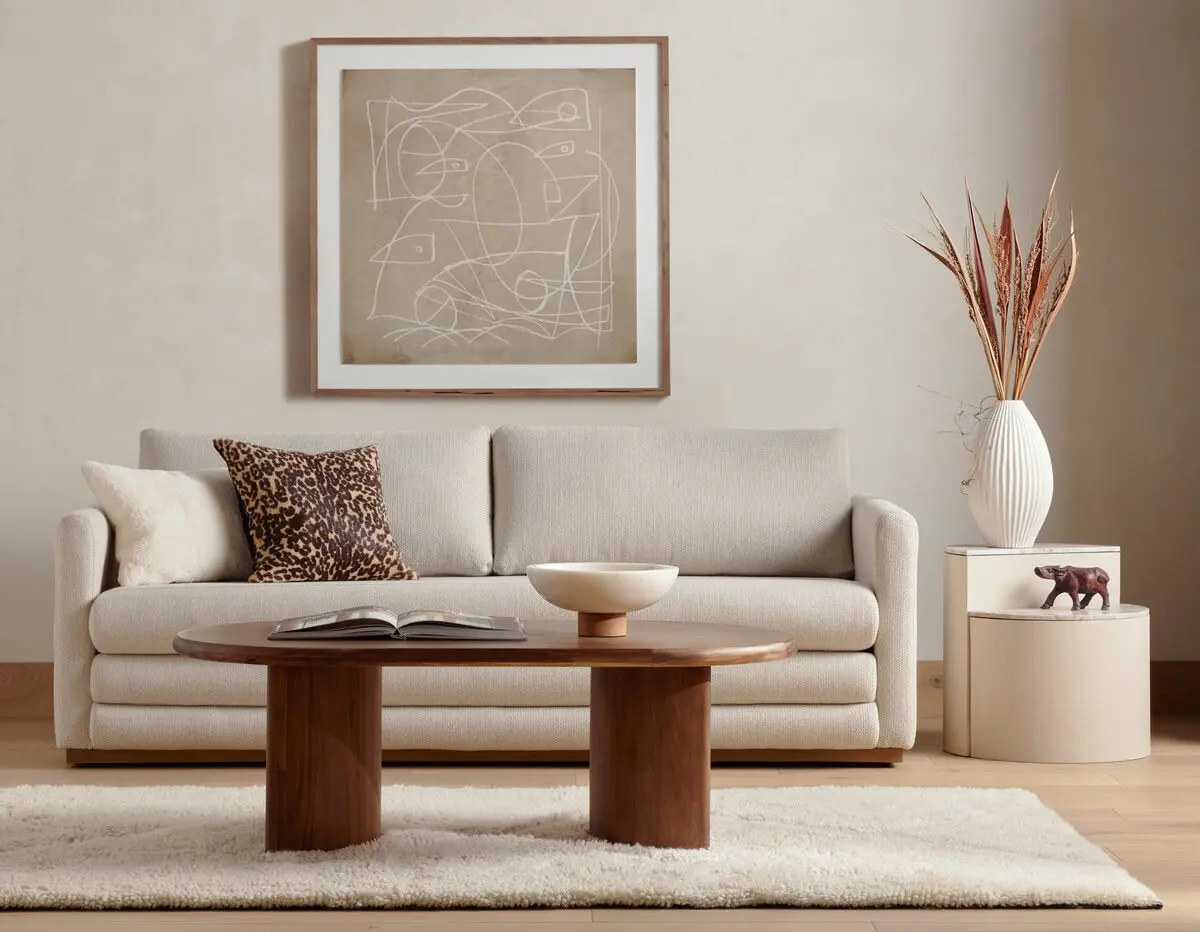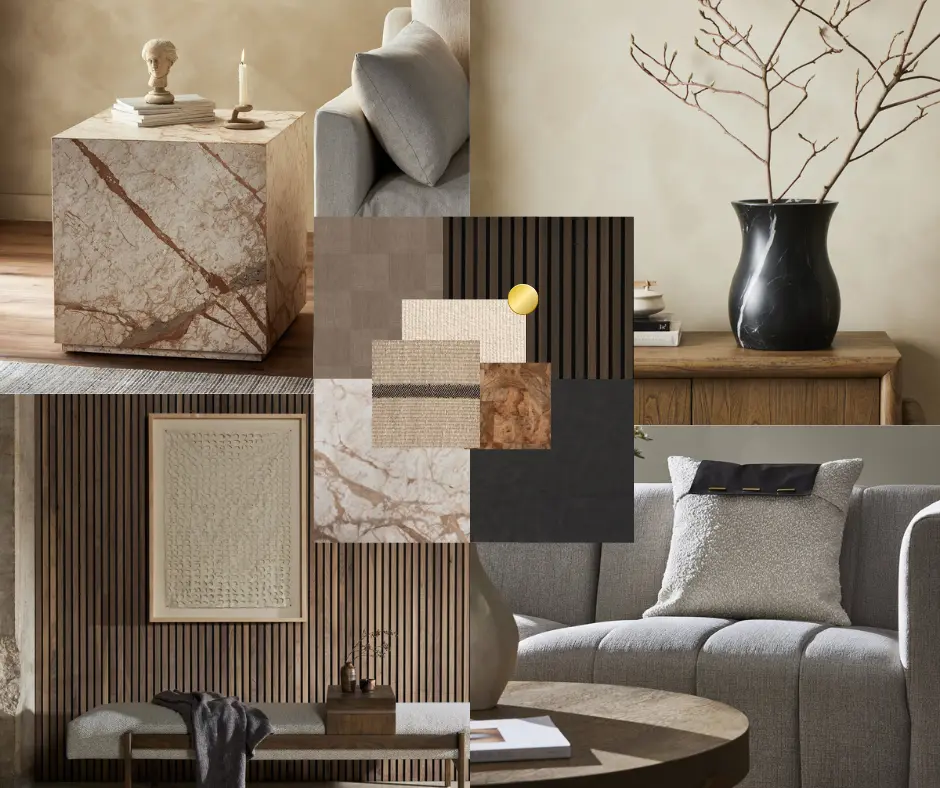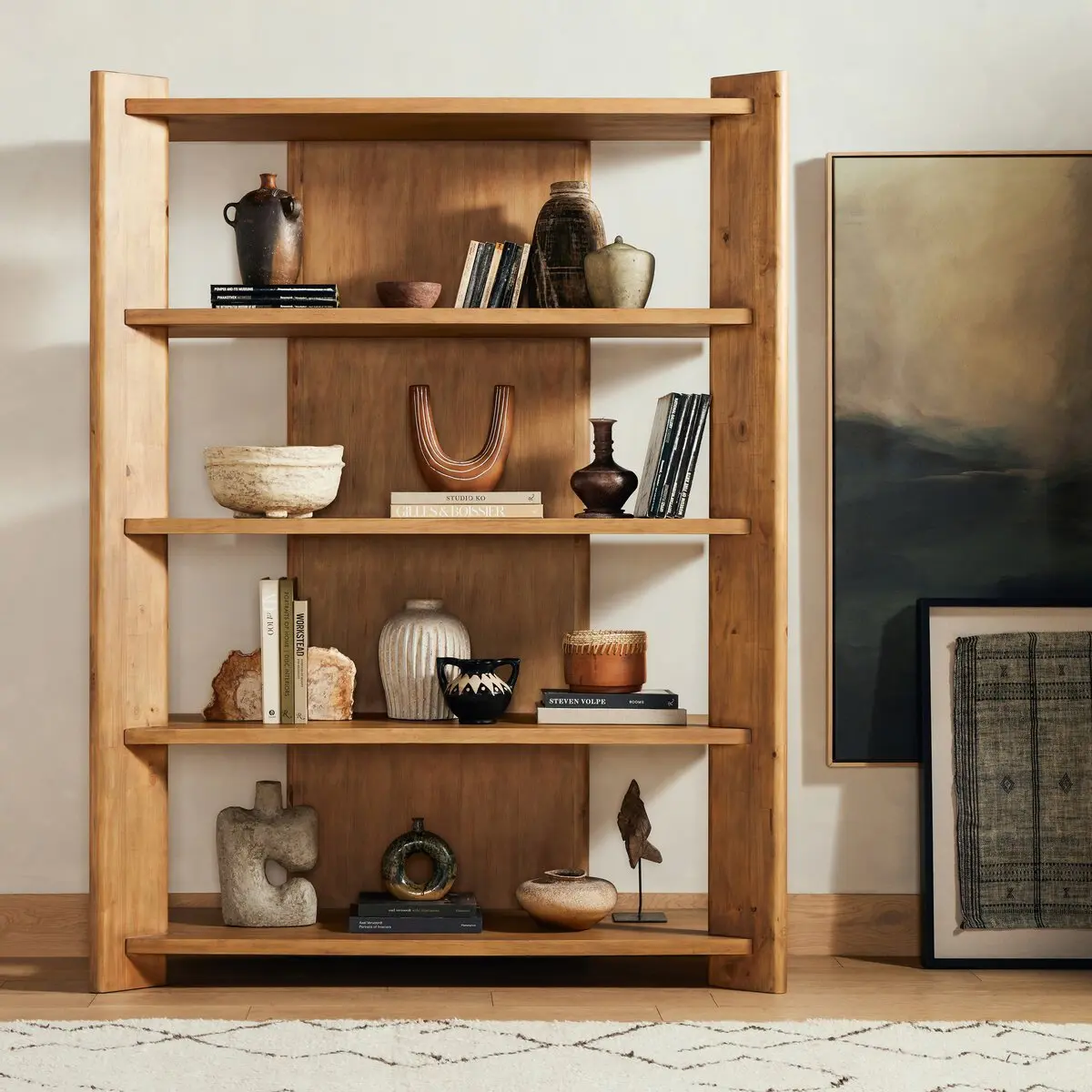Decorating your space can be both exciting and overwhelming. With so many options available, how do you choose the perfect decor items to create an inviting and harmonious atmosphere? In this guide, we’ll break down the essentials of selecting decor that complements your style and enhances your living space. Let’s dive into the world of beautiful interiors!
When it comes to decorating your home, the decor you choose can either elevate a space or create unnecessary clutter. While aesthetics are important, function, balance, and cohesion matter just as much. Whether you’re styling a new space or refreshing a room, here’s a more in-depth guide to help you choose pieces that feel just right.
Proportionality and Scale: Sizing Matters
It’s easy to fall in love with a piece in a store or online, only to realize it’s too large or too small once it’s in your home. Understanding proportionality helps you avoid common styling mistakes.
Tips & Examples:
- Use the 2⁄3 Rule: When hanging art above a sofa or console, aim for the piece (or group of pieces) to span roughly two-thirds the width of the furniture below.
- Anchor Large Spaces: For high ceilings or open layouts, go big with floor lamps, oversized art, or tall plants like a fiddle leaf fig. Tiny items can feel lost in large rooms.
- Edit Small Rooms: In compact spaces, use sleek, minimal decor that adds personality without crowding. Think a stack of books with a sculptural object or a petite lantern on a shelf.
Textural Variety: Layer for Warmth and Dimension
A well-designed room isn’t just about how it looks — it’s about how it feels. Texture brings a space to life and creates a sense of warmth and depth.
Ideas to Try:
- Pillows & Throws: Opt for larger, high-quality pillows (e.g., 24” x 24”) with natural fabrics like linen or velvet. Down alternative fills add both comfort and structure.
- Material Mixing: Combine wood, leather, metal, ceramic, and textiles in a space. For example, pair a marble side table with a rattan chair and a brushed brass lamp.
- Natural Touches: Add tactile elements like jute rugs, clay pottery, or chunky knit throws to evoke a cozy, grounded vibe.
When mixing patterns, remember the 80⁄20 rule: let 80% of your decor be a simple color or texture, reserving 20% for bolder patterns. This strategy prevents your space from feeling chaotic while allowing your personality to shine through.
Visual Flow: Guide the Eye, Don’t Overwhelm It
Great design invites the eye to travel naturally through the space. If everything is one height or shape, a room can feel flat.
Design Strategies:
- Vary Heights: Use tall candle holders, mid-height vases, and low bowls to build a layered vignette on your console or coffee table.
- Create Movement: Place a tall item at one end of a shelf or surface and gradually reduce height across the surface. This zigzag effect leads the eye gracefully.
- Balance with Symmetry (or Break It): While symmetry can create order, an occasional break — like an asymmetrical shelf styling — adds interest.
Color and Theme: Stay Cohesive but Not Matchy-Matchy
Your home should feel unified, not like a showroom. A cohesive color palette ties everything together — but that doesn’t mean every item has to be the same shade.
Practical Tips:
- Use a Color Anchor: Choose 2–3 primary tones and repeat them throughout the room in different ways (e.g., navy in a rug, pillows, and a painting).
- Play with Neutrals + Accents: Start with neutral foundations, then add pops of color through smaller, changeable items like vases, candles, or wall prints.
- Avoid Overmatching: Don’t buy everything from one collection. Mix vintage and modern, new and old, matte and glossy to keep it curated, not cookie-cutter.
Quick Checklist: Before You Buy That Decor Item
- ✔️ Does it fit the scale of the space?
- ✔️ Does it contribute to textural or visual variety?
- ✔️ Does it support the room’s color palette or design story?
- ✔️ Is it meaningful, functional, or genuinely beautiful to you?
Final Thoughts on Curating Your Ideal Space
Choosing the perfect decor items isn’t about filling every surface — it’s about telling your story through thoughtful pieces. By focusing on proportion, texture, movement, and personality, you can design a space that’s visually harmonious, emotionally supportive, and deeply your own.




